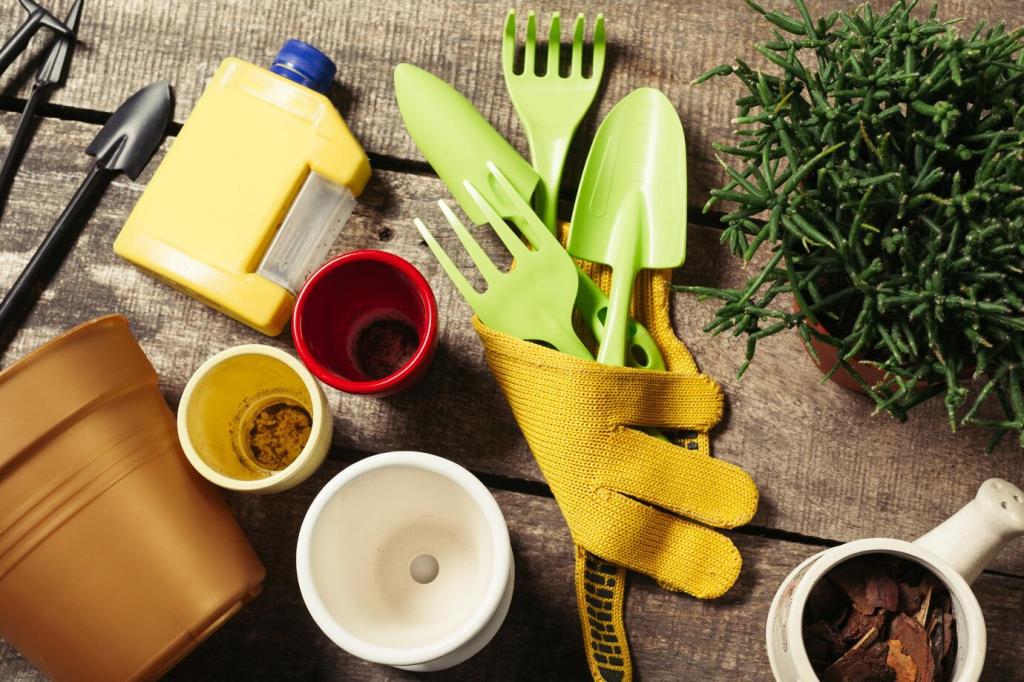Innovative Landscape Design Trends for 2024: Transforming Every Outdoor Space
Chosen theme: Innovative Landscape Design Trends for 2024. From water-wise planting to tech-savvy planning, this year’s landscapes blend ecology, beauty, and everyday practicality. Join our community conversation—share your questions, subscribe for monthly field notes, and tell us what trend excites you most.
Climate-Smart Planting for a Thirstier World
Drought-Resilient Plant Palettes
Designers are pairing deeply rooted native grasses with Mediterranean herbs, textural succulents, and shade-casting trees to stabilize soils and preserve moisture. A reader’s courtyard swap from thirsty lawn to lavender, manzanita, and ornamental oat grass transformed maintenance routines, invited bees, and reduced stress. Ask for our starter palette guide in the comments.


Precision Irrigation With Soil Sensors
Smart drip systems guided by moisture sensors and weather data deliver water exactly where roots need it, only when they need it. Fewer overspray losses mean healthier beds and calmer utility bills. If you’ve tried sensor-based watering, share your experience, and subscribe for a quick setup checklist we send to new readers.
Backyard Biodiversity as a Design Driver
Pollinator Corridors and Bloom Sequencing
Continuous food sources matter more than isolated nectar bursts. Designers stagger flowering times across seasons, linking beds into corridors humming with bees, butterflies, and moths. One family reported monarchs returning after they added milkweed and late-blooming asters. Want a four-season bloom plan? Subscribe for our month-by-month seed list.
Micro-Meadows and Rethinking the Lawn
Short wildflower meadows and no-mow fescues replace weekly mowing with seasonal beauty and habitat value. The soft sway of seed heads in afternoon light invites pause. If you’ve converted a strip of lawn, share your favorite species mix and lessons learned—your story can guide another reader’s first patch.
Layered Canopies: Trees, Shrubs, Understory
Structure brings stability. A healthy canopy of region-appropriate trees cools air, native shrubs feed birds, and understory groundcovers protect soil. This layered approach withstands storms better and looks composed year-round. Comment with your hardiness zone, and we’ll suggest three native layers to start planting this season.

Reclaimed and Recycled Surfaces With Character
Antique brick, reclaimed timber, and recycled composite decking bring history and warmth without new extraction. Variations in tone read as intentional texture, not imperfection. A reader’s patio built from salvaged pavers became an instant conversation piece. Ask for our salvage yard checklist before your weekend hunt.
Permeable Pavers and Rain Gardens
Permeable systems let water soak through, feeding soils while preventing puddles and runoff. Pairing these surfaces with rain gardens captures storm peaks gracefully. Share your soil type and slope details, and we’ll suggest a layered approach—base stone, joint fill, and planting—to keep paths stable and dry.
Lower-Carbon Concrete and Local Stone
Blends that reduce cement content and locally quarried stone cut transport emissions while maintaining durability. Honed finishes and careful detailing elevate simple forms. If you’re weighing cost versus impact, tell us your project size; we’ll send a quick primer on comparing embodied carbon across options.
Outdoor Rooms for Wellbeing and Connection
Sensory Paths and Therapeutic Planting
Textured pavers underfoot, fragrant herbs at hand, and rustling grasses along edges create immersive routes that soothe the nervous system. One reader walks a short morning circuit, touching rosemary and listening for wrens before logging on. Tell us your favorite sensory detail to inspire others.
Private Nooks With Green Screens
Espaliered fruit, bamboo in planters, or trellised vines provide privacy without heavy walls. Strategic screening refines sightlines and frames views you want to keep. Show us your sun angles and we’ll help place a bench, arbor, and vine trio for a restorative hideaway.
Low-Smoke Fire and Efficient Outdoor Kitchens
Smokeless fire pits, induction cooktops, and compact prep stations keep gatherings cozy and clean. Materials chosen for easy wipe-downs mean more time together, less time maintaining. What’s your go-to cold-weather dish outside? Comment your recipe and subscribe for our hosting checklist.
Urban and Small-Space Breakthroughs

Lightweight soil mixes, drought-tolerant plantings, and modular panels transform blank surfaces into cooling, habitat-rich layers. An apartment building added a pocket green roof and saw residents gather at sunset. Considering one yourself? Ask about waterproofing basics and plant trays to keep installs manageable.
Regenerative Landscapes and Rewilding
Compost teas, leaf mulch, and minimal disturbance practices rebuild microbial life, improving water retention and plant resilience. A neighbor’s beds revived after a season of sheet mulching and patience. Want our soil starter test? Subscribe and tell us your texture guesses—sand, silt, or clay.
Regenerative Landscapes and Rewilding
Log planters inoculated with mushrooms, mycorrhizal amendments, and bio-based edging celebrate partnerships below ground. Healthy fungal networks share nutrients between plants and stabilize moisture. If fungi fascinate you, comment with your favorite species and we’ll compile beginner tips for garden-friendly cultivation.
